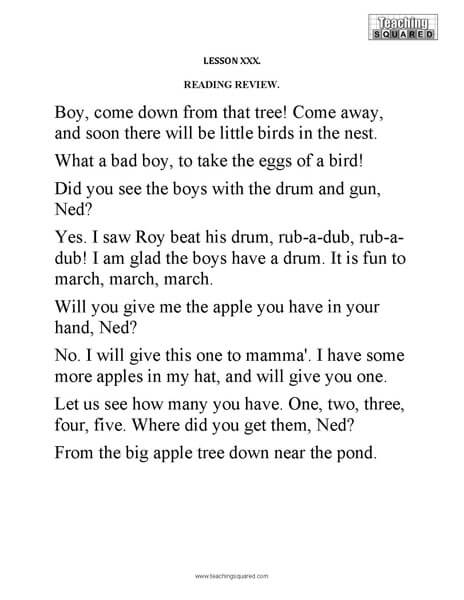This selection comes from Barnes New National First Reader from 1888. This book contains simple reading lessons that are a great way to begin reading instruction. Check the bottom of the page to get more from the authors about the intent and proper usage of this content.
Lesson 1- Alphabet- Practice letter recognition and basic letter sounds. 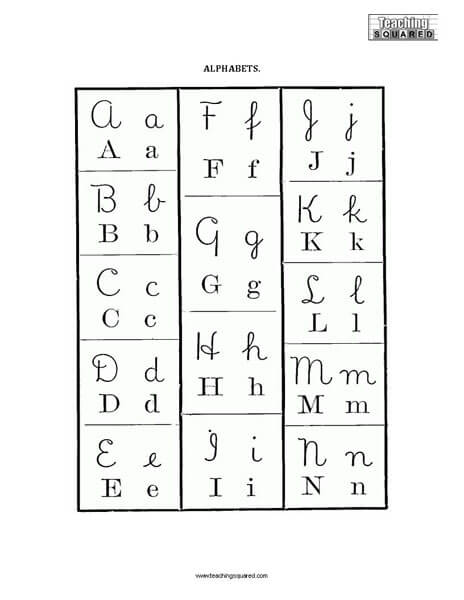

Reading Lesson 1-4- Practice reading with this short lesson. 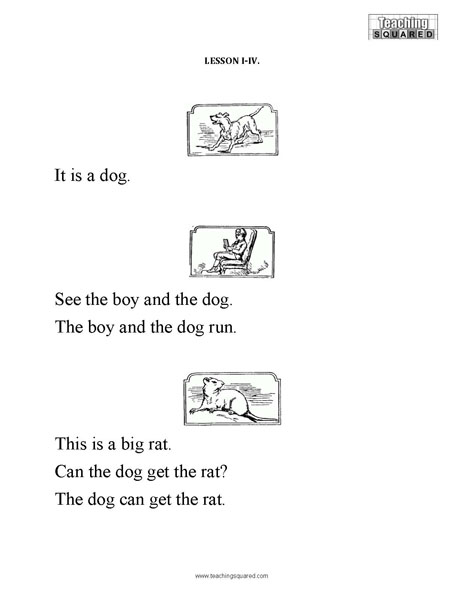

Spelling Review Lesson 5- Practice spelling with this short lesson. 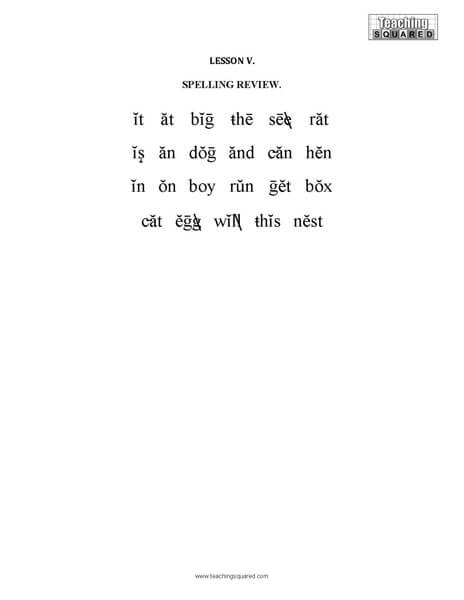

Reading Lesson 6- Practice reading with this short lesson. 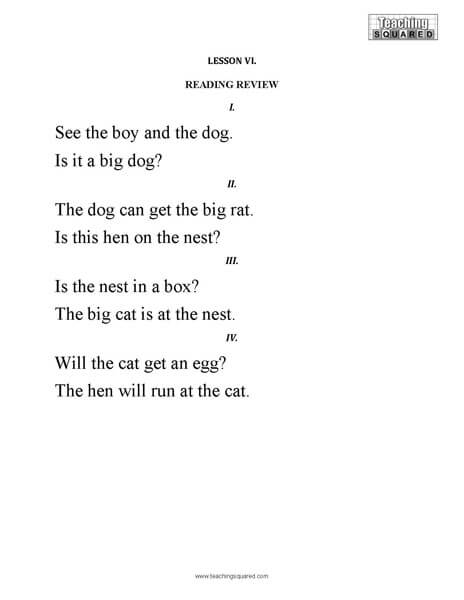

Object Exercise Lesson 7- Practice reading with this short lesson. 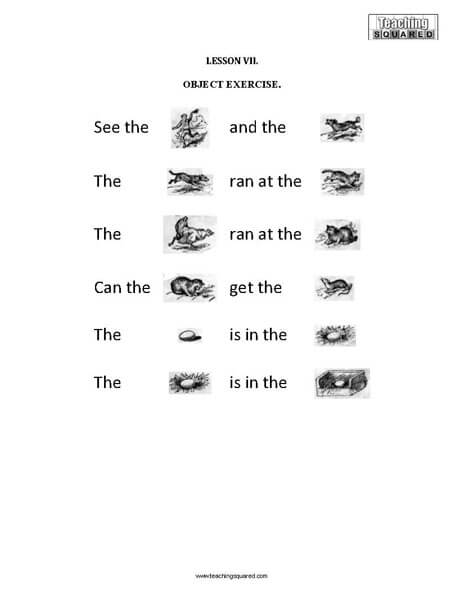

Reading Lesson 8- Practice reading with this short lesson. 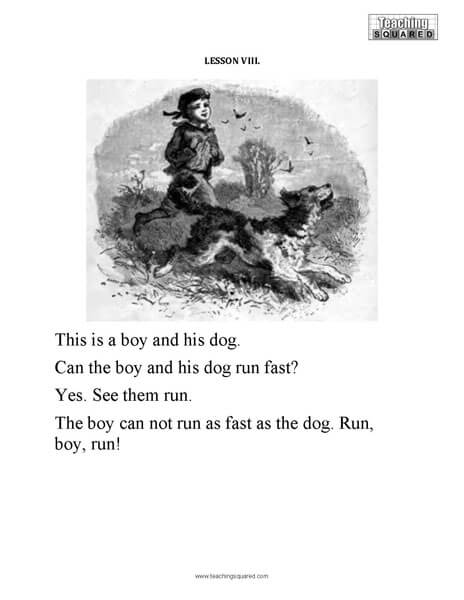

Reading Lesson 9- Practice reading with this short lesson. 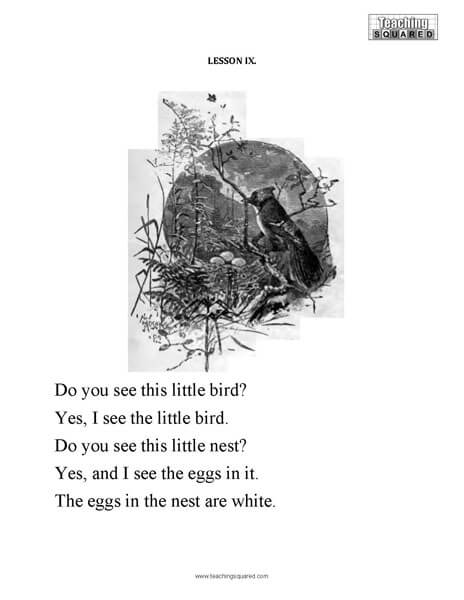

Reading Lesson 10- Practice reading with this short lesson. 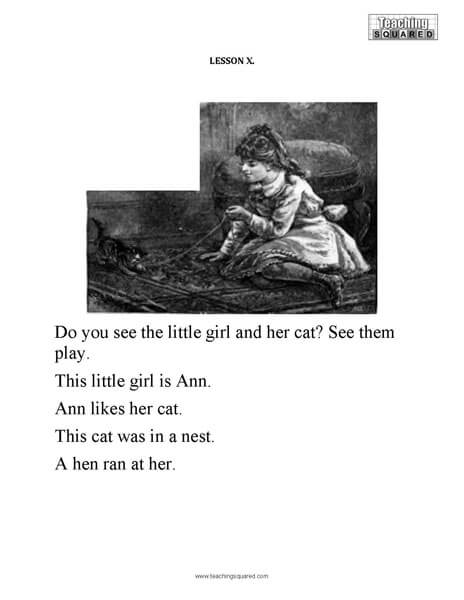

Reading Lesson 11- Practice reading with this short lesson. 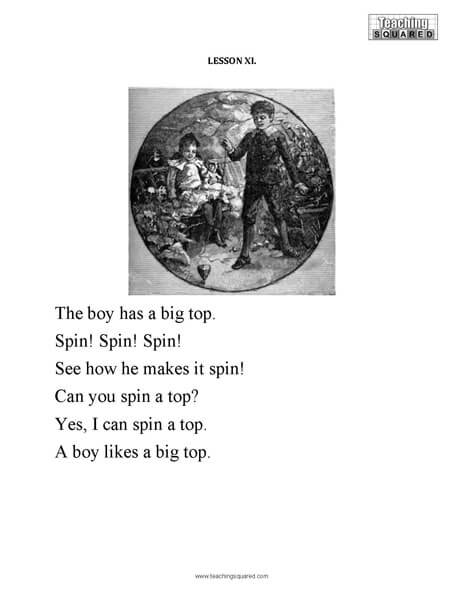

Reading Review Lesson 12- Practice reading with this short lesson. 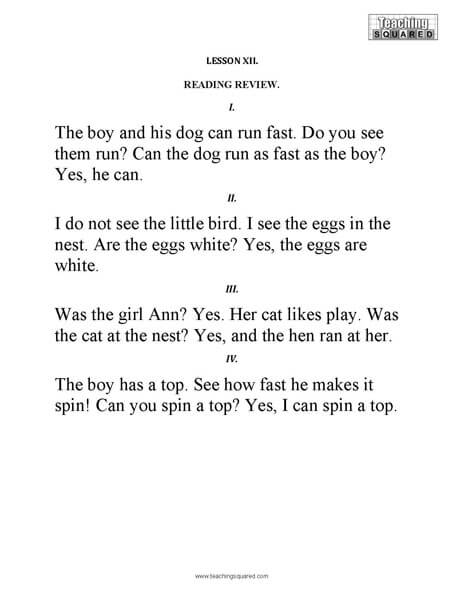

Reading Lesson 13- Practice reading with this short lesson. 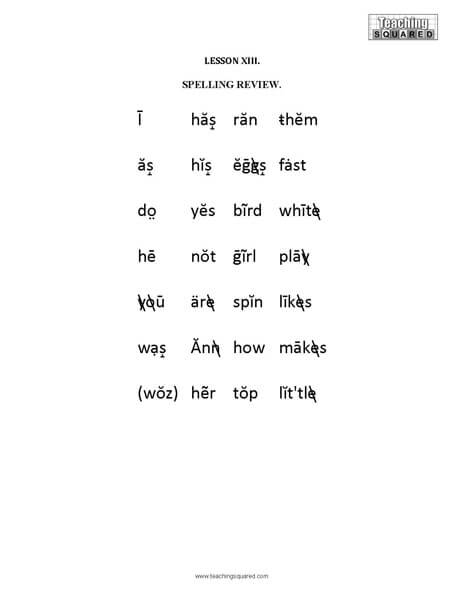

Reading Lesson 14- Practice reading with this short lesson. 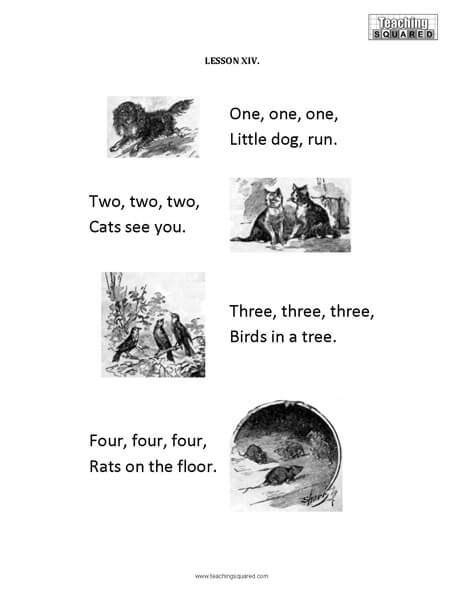

Reading Lesson 15- Practice reading with this short lesson. 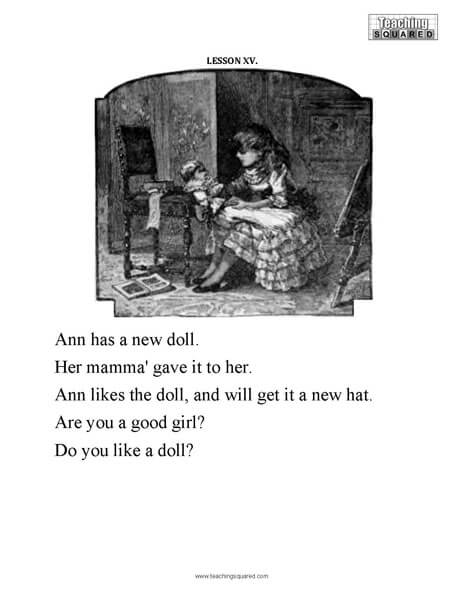

Reading Lesson 16- Practice reading with this short lesson. 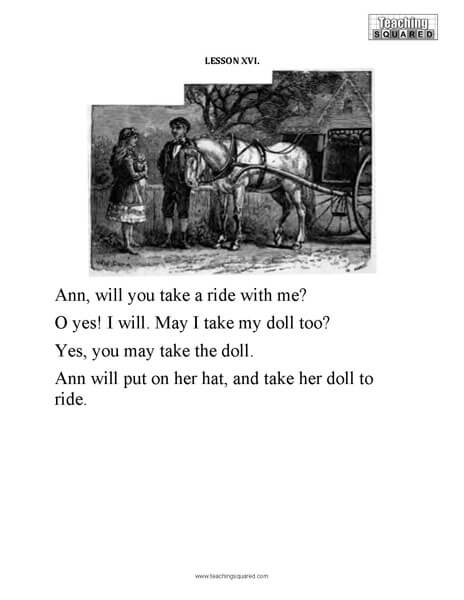

Reading Lesson 17- Practice reading with this short lesson. 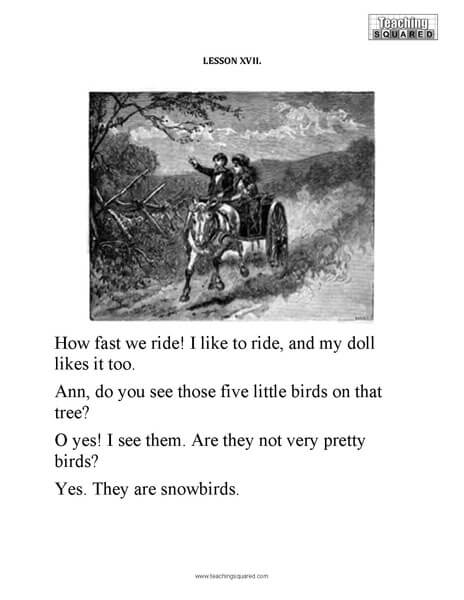

Reading Lesson 18- Practice reading with this short lesson. 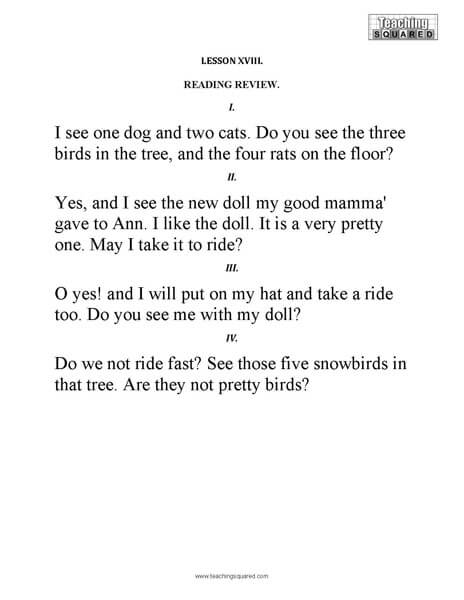

Reading Lesson 19- Practice reading with this short lesson. 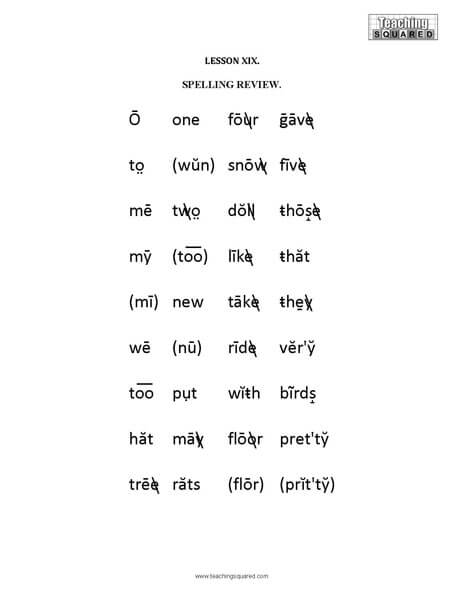

Reading Lesson 20- Practice reading with this short lesson. 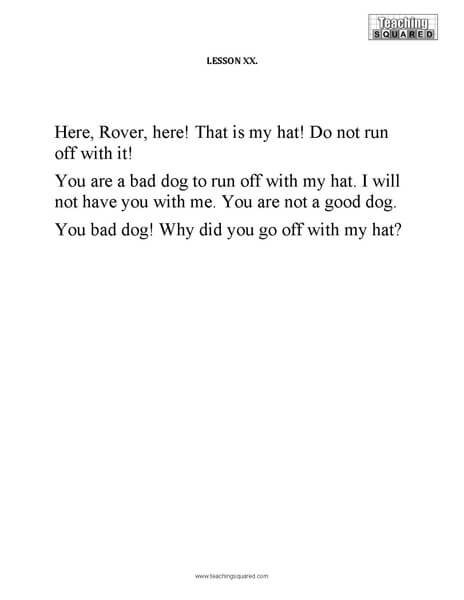

Reading Lesson 21- Practice reading with this short lesson. 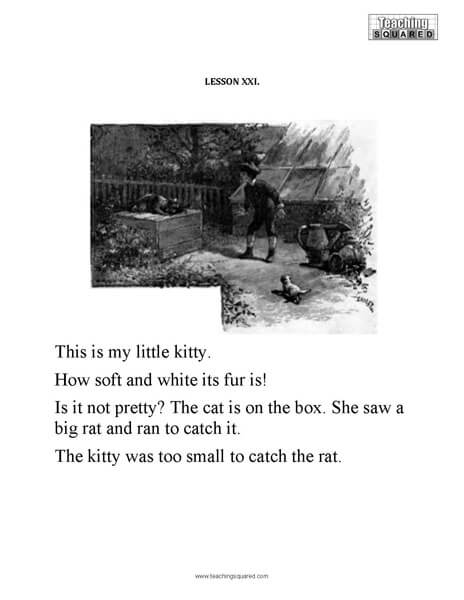

Reading Lesson 22- Practice reading with this short lesson. 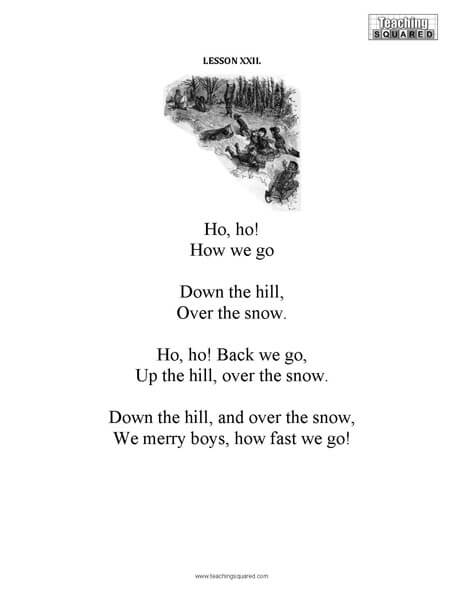

Reading Lesson 23- Practice reading with this short lesson. 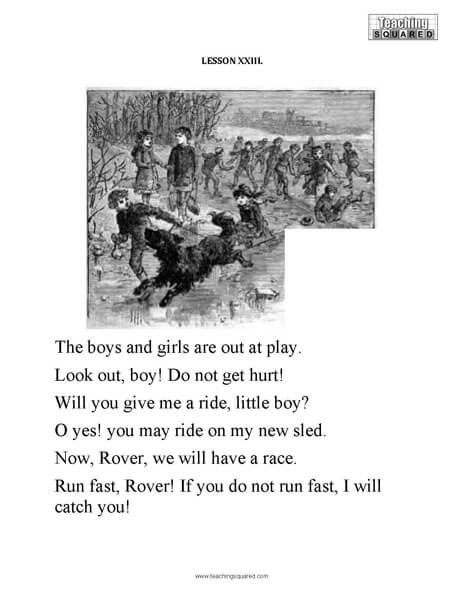

Reading Lesson 24- Practice reading with this short lesson. 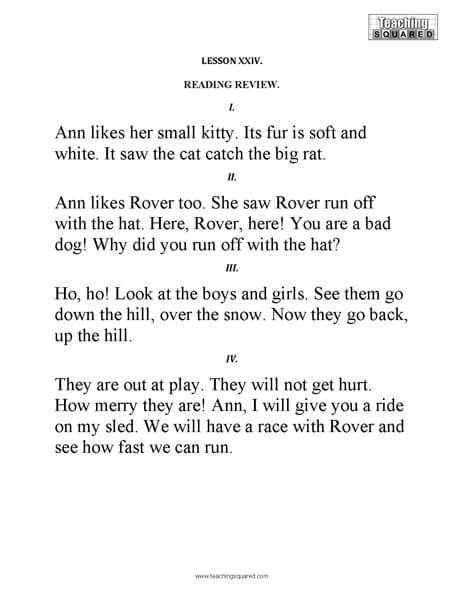

Reading Lesson 25- Practice reading with this short lesson. 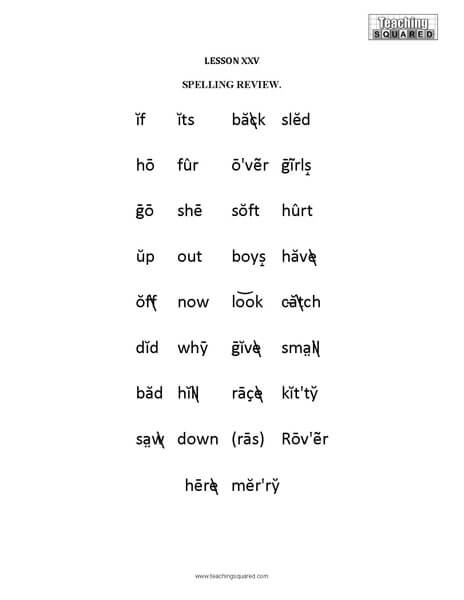

Reading Lesson 26- Practice reading with this short lesson. 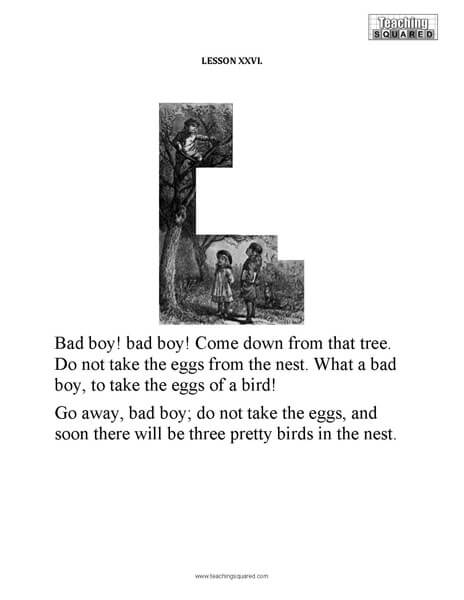

Reading Lesson 27- Practice reading with this short lesson. 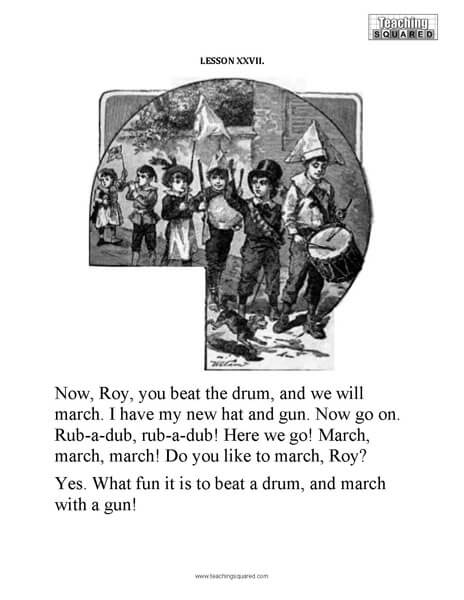

Reading Lesson 28- Practice reading with this short lesson. 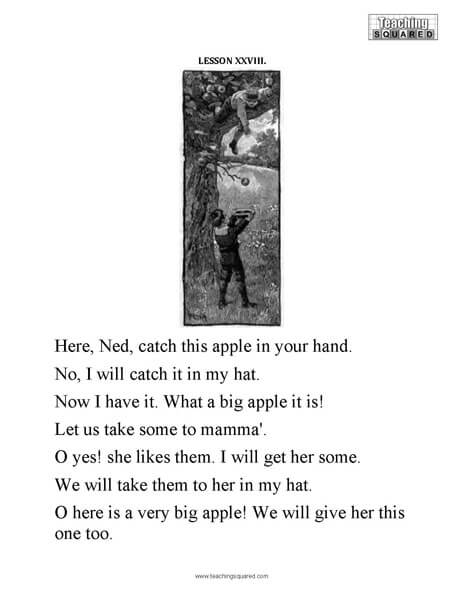

Reading Lesson 29- Practice reading with this short lesson. 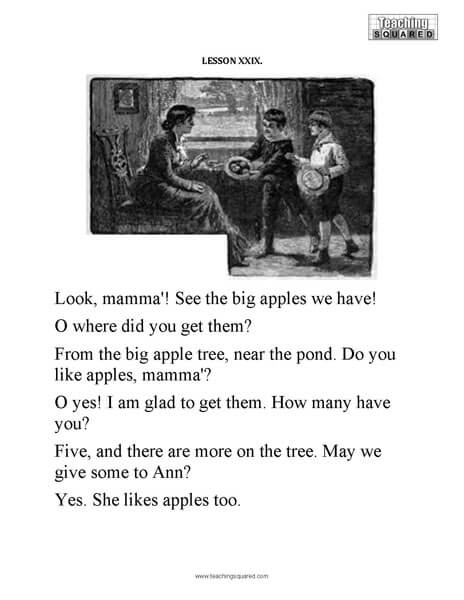

From the Preface of the book- The authors of this book believe,– 1st.–That the Word Method is the most natural and practicable, because words are representatives of objects, actions, etc., while letters, or sounds, in the abstract, convey no meaning to the pupil, and are devoid of interest. 2d.–That words of ordinary length are as easily learned as short ones, provided they are familiar to the pupil. No teacher will doubt the statement that a pupil will learn the word “mamma'” as easily as “says” or “eyes.” 3d.–That frequent “Reviews” are essential to the rapid and thorough advancement of pupils. By this means the words imperfectly learned are again brought to their attention and thoroughly memorized. That these “Reviews” ought to take up the new words in a different order and arrangement, in order to test the ability of the pupil to recognize them in any situation. That as soon as the vocabulary is large enough they should be written in the form of a new exercise, as on pp. 36, 44, 52, 60, and 68 of this book. 4th.–That thorough and systematic drill in Spelling is absolutely necessary. That the “Reading Reviews” should be so constructed as to contain all the new words used in the lessons they were intended to review, and no others, so that they can be used for “Written or Dictation Spelling.” That the pronunciation of the words in the “Spelling Reviews” should be indicated by the diacritical marks of Webster, so that they can be used for either “Oral Spelling” or “Phonic Drill.” 5th.–That the “Script” from which the pupil gets his first and most lasting impressions should be of large size and accurate form, and not of the nondescript character usually found in books of this class. That it should be free from superfluous line and flourish, and yet have grace and beauty. That it should be adapted for both copying and reading. 6th.–That the lessons should be largely “conversational in style,” to cultivate flexibility of voice and to break up the dreary monotone so frequently heard among children. 7th.–That the lessons of a book of this grade should not average more than seven “new words.” That all such words should appear at the commencement of lessons, and be familiar to the pupil. That this method secures careful gradation, and is in marked contrast with the old custom of having from fifteen to twenty-five. 8th.–That “Outline Drawings” of the objects first presented to pupils should be made in the presence of the class, as it stimulates them to draw, and thus makes easy and profitable the copying of the “Script Exercises.” 9th.–That the schoolbook of to-day must be beautifully and copiously illustrated. That there must be variety as well as excellence, both in drawing and engraving. That well-known and famous artists must be secured, such as Harper, Fredericks, Church, Lippincott, Eytinge, White, Beard, Weldon, Thulstrup, Cary, Moser, Weaver, and Share; and such engravers as Karst, Wigand, French, Held, Davis, Hellawell, etc. 10th.–That the exercises must be instructive as well as interesting, and that no artificial system of vowel classification ought to interfere with the free and natural use of words. 11th.–That a book of this kind should be suited to the wants of graded and ungraded schools, there evidently being nothing in the one not readily adaptable to the other. 12th.–That every book of this class should contain a collection of brief extracts from standard literature to be committed to memory. 13th.–That this book is constructed on the above principles. Hover over an image to see what the PDF looks like.
Thank you for checking out our letter practice worksheets. Come back often as we are always adding new activities for teachers and students to enjoy. If you’re looking to practice math concepts including math facts, math computations, fractions, counting money and more, you can find it here- Math Worksheets . For language arts practice, such as phonics and diagramming, you can find it here- Language Arts Worksheets We also offer a ton of fun activities including mazes, decoding, coloring pages, and more. Find it here- Fun Activities More free activities for kids will be coming soon. Come back often to see what’s new!
Thank you for checking out our letter practice worksheets. Come back often as we are always adding new activities for teachers and students to enjoy. If you’re looking to practice math concepts including math facts, math computations, fractions, counting money and more, you can find it here- Math Worksheets . For language arts practice, such as phonics and diagramming, you can find it here- Language Arts Worksheets We also offer a ton of fun activities including mazes, decoding, coloring pages, and more. Find it here- Fun Activities More free activities for kids will be coming soon. Come back often to see what’s new!

